When Audemars Piguet launched its game-changing Royal Oak in 1972, girls were wearing hot pants, guys were in flares, David Bowie’s alter-ego Ziggy Stardust was in the charts with Starman, and Gucci was the global luxury fashion brand of the moment (as it is again).
Five decades later and the iconic Royal Oak is still a head-turner. The first luxury sports watch to be made of steel, slim (the world’s thinnest self-winding movement with date indication of its time) but at 39mm, bigger than other timepieces of its generation and pioneering a lasting trend for sports-chic designs.
New Zealand model Judith Baragwanath with her partner, the television journalist Rhys Jones, both sporting the look in vogue when the Royal Oak launched in 1972.
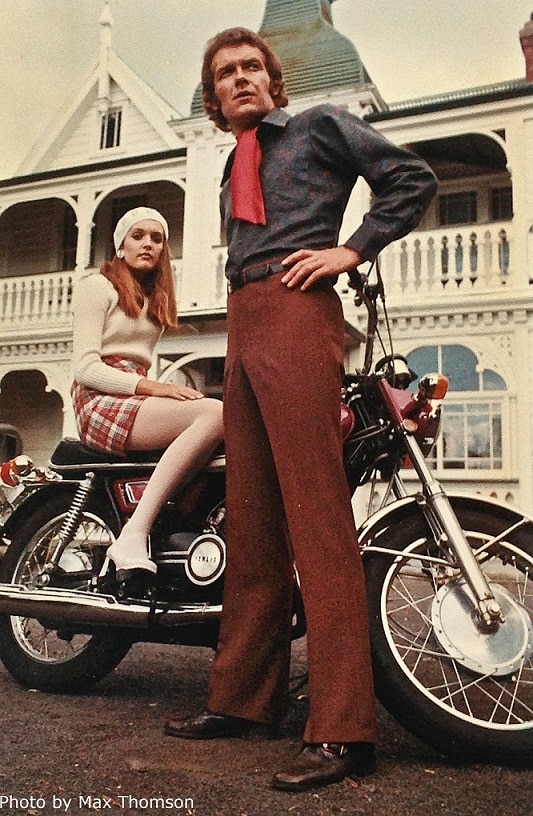
Audemars Piguet’s brief to the visionary designer Gérald Genta by Managing Director Georges Golay was: “I want it to be something totally new and waterproof. And I want the design tomorrow morning.” Never short of an idea and known for pushing boundaries, Genta completed it overnight, “My idea was to replicate the system of a scaphander’s (rigid diver’s) helmet on the watch case, with the eight screws and with the joint visible on the case’s exterior,” he said. The revolutionary octagonal bezel, grid-textured guilloché dial, metal bracelet and all constructed in a common industrial material (steel), drew inspiration from the nautical world. However, it also resonated with the cultural groundswell sweeping contemporary design of that era, echoing the vogue for brutalist architecture and car design.
After receiving the green light to begin work on the prototype – which Genta completed within a year – the Royal Oak debuted in 1972. The timing was perfect as fashion was moving away from traditional masculine tailoring to a more casual laidback look of dressing with patterned knitwear, flamboyant shirts, corduroy, velvet, bell-bottom trousers, and jeans. A stylish macho-looking sports watch was the ideal counterbalance to the fashion peacockery that dominated menswear during that period. As Georges Golay explained in an interview in 1982: “A stainless-steel watch (is) more in tune with the way we live today. We had to invent a model both sporty and stylish in spirit, suitable for evening wear and for the daily activities of today’s man of taste.”
With a 29mm dial, the first Royal Oak designed for women was conceived by Jacqueline Dimier in 1976.
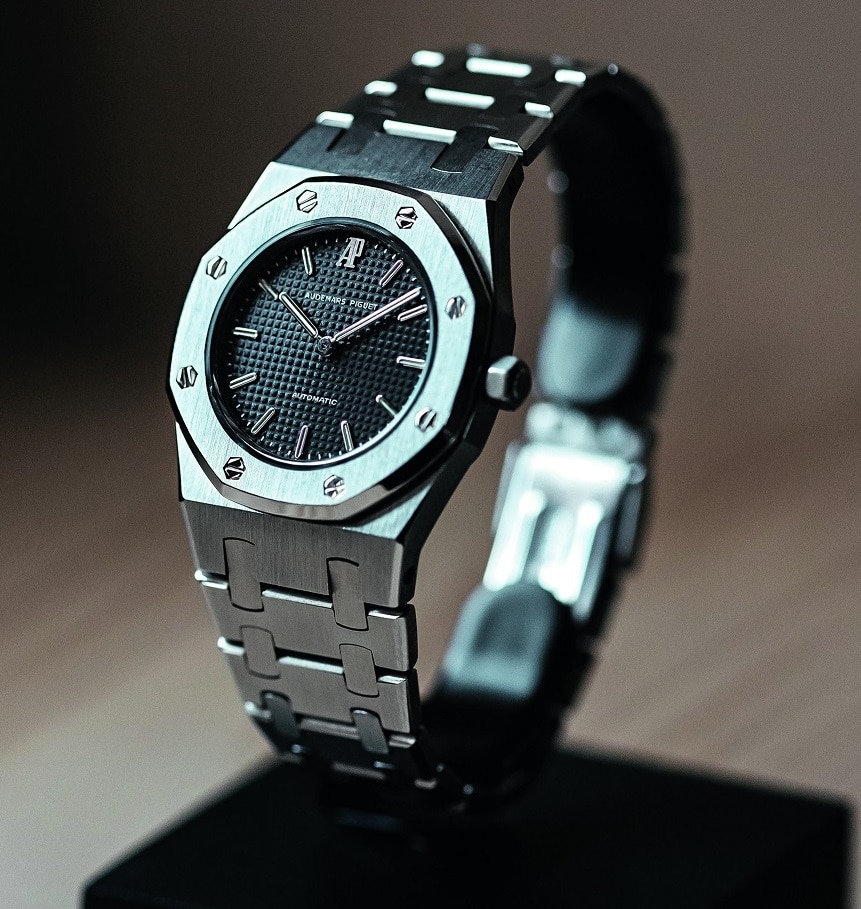
Fifty years on, over 500 Royal Oak models have been created transforming this iconoclast into a cultural icon. In 1976 came a woman’s version designed by Jacqueline Dimier, surprisingly much smaller at 29mm, and the following year it was reinterpreted in yellow and white gold, and in two-tone steel and yellow gold. Its modern look felt in sync with the slick polished glamour of supermodels, designers and celebrities of the era like Jerry Hall, Diane von Furstenberg and Bianca Jagger.
In the 1980s, the brand explored fresh aesthetic possibilities for the Royal Oak with new sizes and materials. Taking its lead from Dimier’s luxurious women’s model in a decade when economies were booming and fashion was highly gilded, Audemars Piguet launched gold models for men. It then introduced platinum and pink gold which were often accompanied by a gem-set dial or bezel.
Smart and stylish, the Royal Oak played a crucial role in the revival of classic complications featuring multiple calendar functions with the first day date model and in 1984, the world’s thinnest self-winding perpetual calendar movement with central rotor of its time. Two years later came the open-worked version. Both were 35mm, a scale that suited the unstructured Italian tailoring that emerged in menswear fashion from brands like Giorgio Armani, Brioni and Zegna to the pinstripe power dressing of Hugo Boss, a style epitomised by Michael Douglas in Wall Street. On the casual side, the sporty-looking Royal Oak suited the preppy attire – varsity jackets, oversized sweaters, denim and sneakers – a style that still resonates in fashion today. Therefore, the launch of the Royal Oak Offshore in 1993 designed by Emmanuel Gueit with its sturdy and muscular reinterpretation of the iconic watch and dramatic 42mm case quickly appealed to a younger generation which saw in it as an ideal accessory for an adventurous lifestyle.
Carolina Bucci’s first collaboration with Audemars Piguet in 2016 resulted in a Royal Oak boasting her signature frosted Florentine finish on the dial.
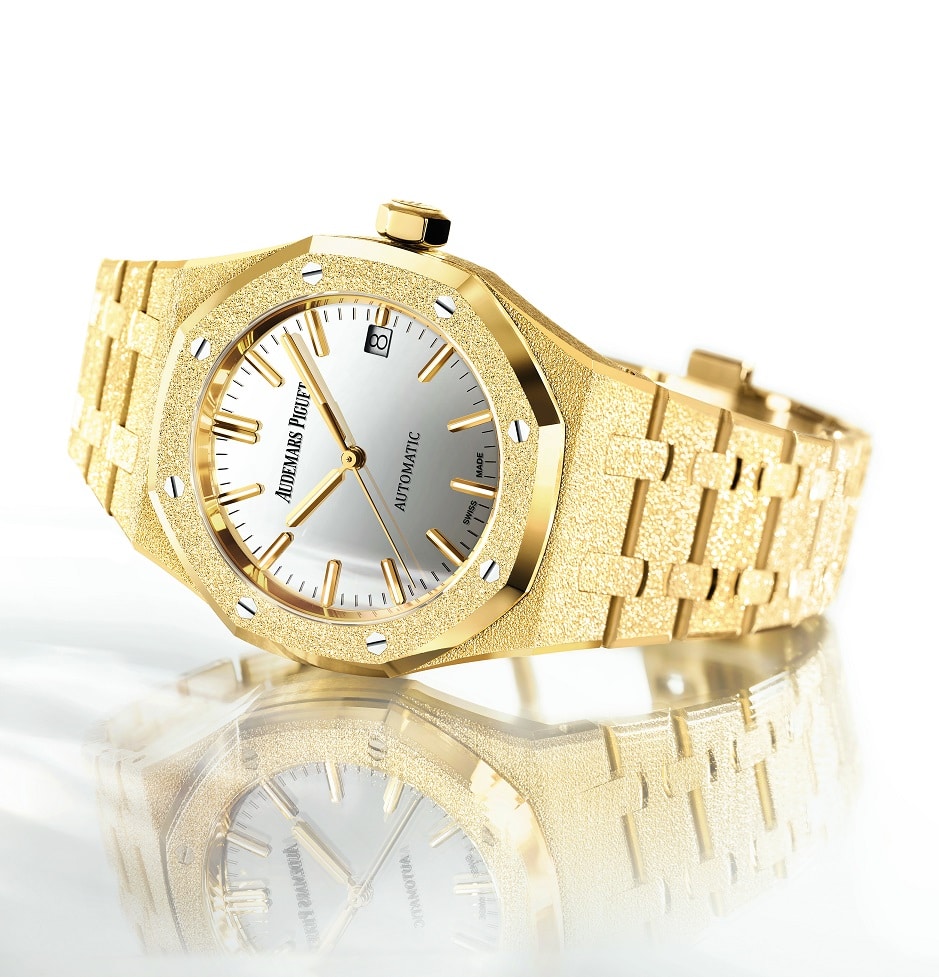
Women’s designs similarly bloomed with creativity, including the first open-worked women’s models in the early 1990s with the historic ultra-thin Calibre 2003SQ, just 1.64mm thick; and in 1997, the Royal Oak Mini, a little yellow gold quartz timepiece measuring a mere 20mm. There was an increase in gem-set models as well, notably the 1998 high jewellery 30mm version in 18k white gold case and bracelet entirely paved with 446 brilliant-cut diamonds and emerald hour markers.
After the minimalist fashion looks of the 1990s, luxurious fashion and jewellery blossomed, which inevitably influenced the watch world. Haute couture was resurgent under the auspices of designers like John Galliano at Dior, Karl Lagerfeld at Chanel, Christian Lacroix and Versace, reimagining the genre for the modern age and appealing to a new generation of clients. The grand couture houses also started introducing high jewellery collections and with that came jewelled timepieces. Watches, consequently, became more opulent and decorative to suit the tastes of those with deep pockets leading glamorous lifestyles.
In menswear, Savile Row elegance and slick sophisticated tailoring from French and Italian designers such as Versace, Valentino and Dior required suitably elegant but big timepieces that could be noted by others around the boardroom table. At the same time, men wanted a design with a robust, sporty edge alluding to a successful lifestyle with plenty of time for leisure activities.
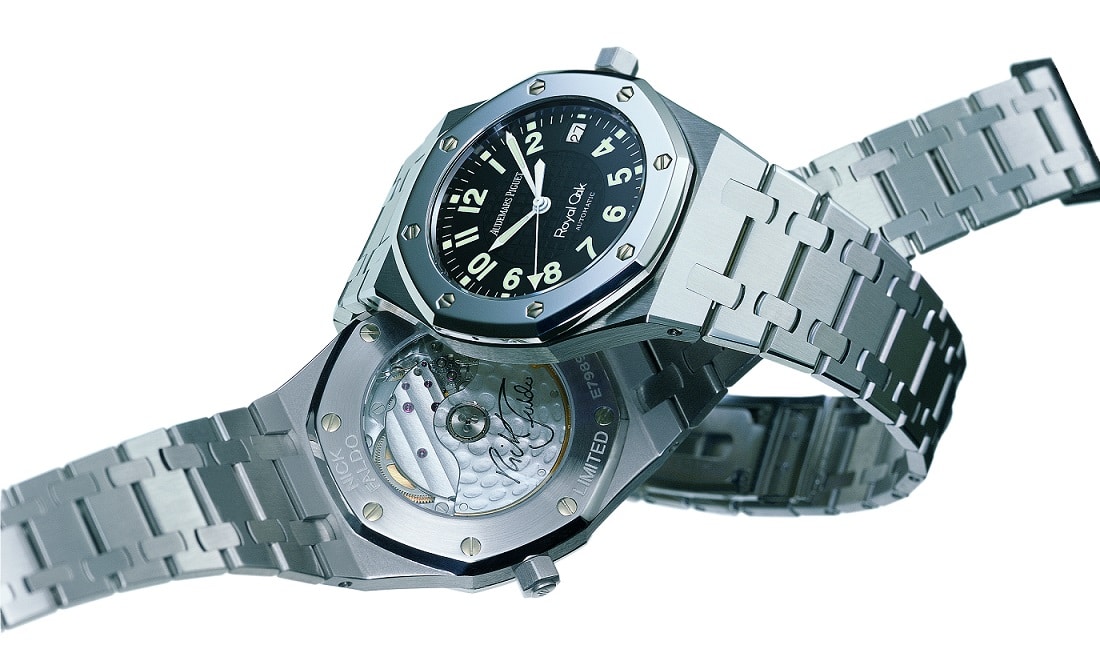
Royal Oak limited edition in collaboration with Nick Faldo. His signature is visible on the back of the watch.
At this point, the Royal Oak was entering its fourth decade bringing out a new version of the bold 39mm, Model 15202, which marked a turning point in the “Jumbo”, the so-called 39mm 1972 design’s history. The aesthetic codes were interpreted with more freedom including new dial colours. There was also the new guilloché Grande Tapisserie dial (a signature of Gérald Genta’s original design) composed of larger pyramid bases. This quickly became a favourite across the collection at a time when bulkier watches were more prevalent. The core collection was 39mm in 2005 whereas it had been 36mm in the 1990s and 35mm in the 1980s.
Limited editions started appearing, often as a result of collaborations with the sports world and celebrities, such as Nick Faldo’s Royal Oak Championship and the Alinghi America’s Cup team. As the decade evolved, the Royal Oak moved away from the bulky, futuristic aesthetic and became more contemporary looking, slimmer, yet wider in diameter (41mm) with ever-more interesting complications including an extra-thin tourbillon.
Royal Oak/Carolina Bucci 2022 limited edition in black ceramic with an iridescent dial.
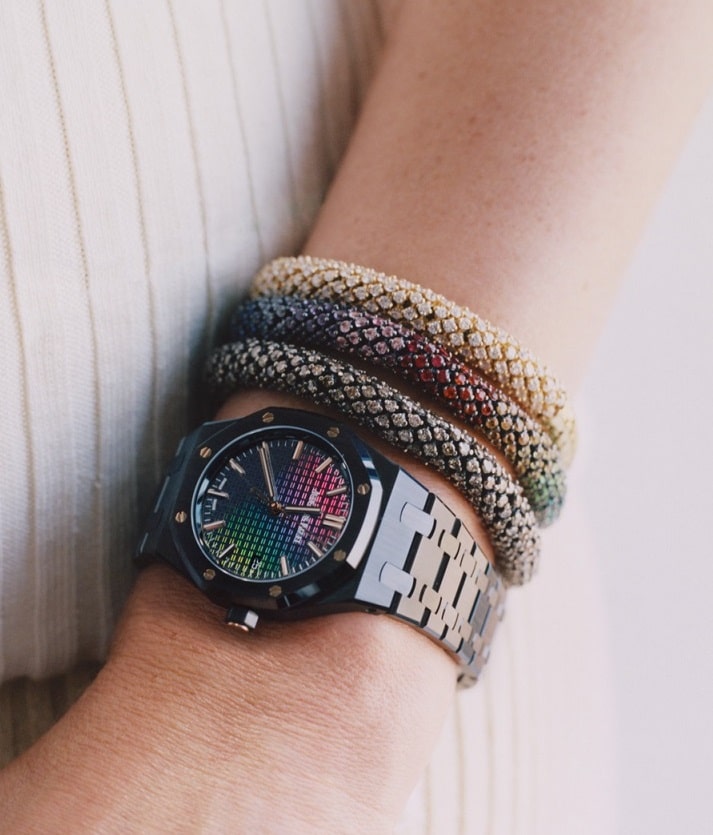
For the Royal Oak’s 50th anniversary there is a new generation of 39mm “Jumbo” extra-thin models, ref. 16202, powered by a new self-winding extra-thin movement, calibre 7121, designed to seamlessly fit in the 8.1mm “Jumbo” case. Replacing the historic Calibre 2121, which has equipped the Royal Oak since its origin, Calibre 7121 increases the performance, reliability and contemporary movement design of the Royal Oak collection. There is also a special new edition for men and women created in collaboration with Italian jewellery designer Carolina Bucci, whose introduction of the frosted Florentine finish (her signature hammered finish technique) in 2016 proved a huge success. Her latest contribution to the Royal Oak aesthetic is a limited edition Royal Oak self-winding 34mm black ceramic design that comes with a surprising new dial. It appears black but up close the Tapisserie effect reveals a multi-coloured iridescent spectrum. The design is a worthy anniversary landmark to Gérald Genta’s avant-garde concept that from the very beginning was destined to become an icon.
Opening picture: Original design by Gérald Genta, recently auctioned at Sotheby’s. © Sotheby’s














Show Comments +